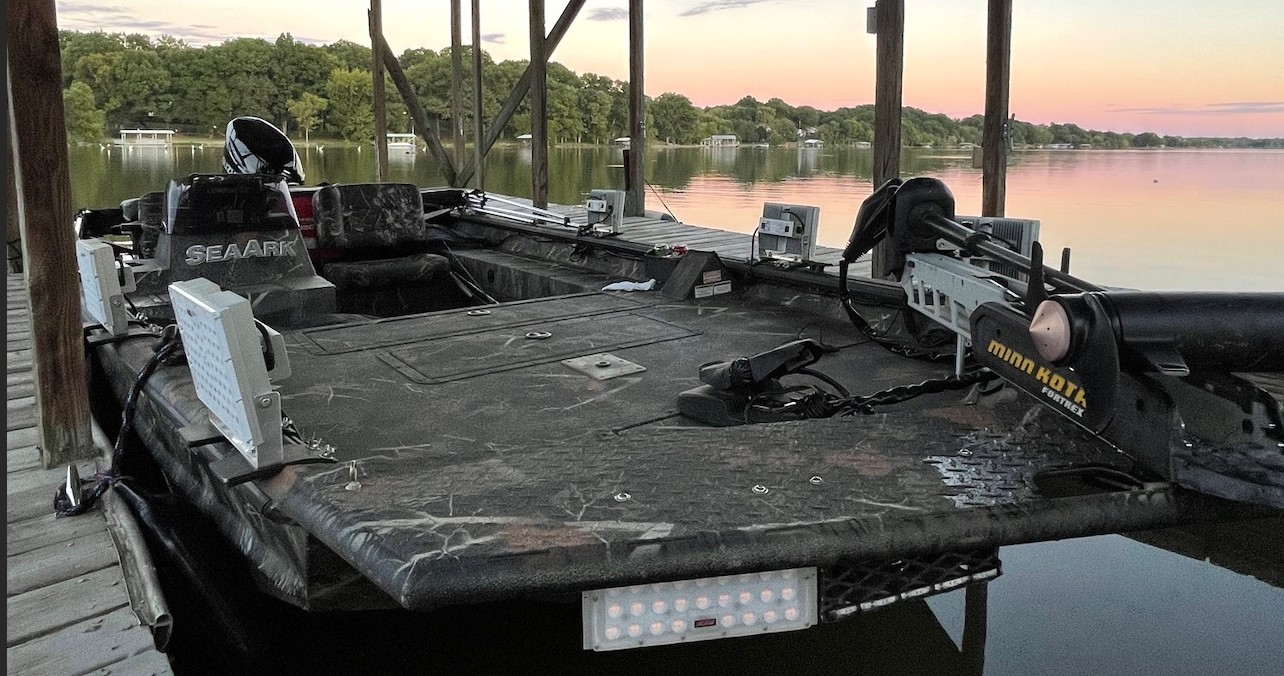Bowfishing: Trout Days and Quiet Wake on Middle Tennessee Waters
All Ages Welcome • 4 Hour Trip • 4 Passengers MAX
The first morning light slices across glassy water and the boat hums forward like a patient animal. You push off from a small marina and the shoreline loosens: oaks lean over the bank, minnows scatter where a heron steps, and the river itself seems to dare you to pick a line. This is Middle Tennessee—where trout tailwaters and reservoir coves trade secrets—and the day ahead is a ledger of small, precise pleasures: a perfect cast, a soft tug, the clean flash of a rainbow trout. Book a guided Bowfishing trip here and you’re signing up for more than a day on the water; you’re buying into a rhythm that the rivers have been keeping long before the motor started.
Trail Wisdom
Bring a Tennessee Fishing License
Buy your license online ahead of time or confirm with your captain—licenses are required and easy to obtain.
Use Polarized Sunglasses
Polarized lenses reduce glare and help you spot trout in shallow seams; also protect your eyes from errant hooks.
Pack Layered Clothing
Mornings on the water can be cool; a light jacket and moisture-wicking layers keep you comfortable as temperatures change.
Come Early—or Fish Late
Trout are most active in low light; aim for dawn or late afternoon for the best action.
Local Knowledge
Hidden Gems
- •Early-morning coves on Percy Priest where bass and trout cross paths
- •Quiet downstream riffles on the Caney Fork that hold insects and hungry trout
Wildlife
Great blue heron, Osprey
Conservation Note
Local conservation groups and the Tennessee Wildlife Resources Agency manage stocking and habitat projects—pack out waste, use barbless hooks when asked, and avoid trampling shoreline vegetation.
The tailwaters below dams like Center Hill were engineered for flood control and hydroelectric power; those same projects created stable cold-water releases that support trout fisheries today.
Seasonal Guide
spring
Best for: Active trout, Comfortable temps, Wildflower scenery
Challenges: Variable spring storms, Cool mornings, Higher flows after rains
Spring is prime for trout activity and pleasant weather; expect lively runs but keep an eye on sudden storms or rising flows after heavy rain.
summer
Best for: Reservoir pockets, Family outings, Long daylight hours
Challenges: Heat and sun exposure, Higher boat traffic, Warm surface temps can push fish deeper
Summer offers stable boating and family-friendly conditions but plan for sun protection and early/late fishing to beat heat.
fall
Best for: Cooler water temps, Colorful foliage, Consistent trout feeding
Challenges: Shortening days, Chilly mornings, Potential for sudden cold fronts
Fall brings excellent trout feedings and color on shorelines—dress in layers for crisp mornings and earlier evenings.
winter
Best for: Quiet waters, Solitude, Targeted tailwater fishing
Challenges: Cold temperatures, Reduced boat services, Short days
Winter trips are quieter and intimate; fish can be selective but tailwaters often remain productive—bundle up and plan shorter outings.
Photographer's Notes
What to Bring
Polarized SunglassesEssential
Improves visibility into the water and protects eyes from glare and stray hooks.
Broad-Spectrum Sunscreen & HatEssential
Prevents sunburn during long exposures on full sun reservoirs.
Light Waterproof Jacket
Shields against morning chill, wind, and unexpected drizzle on the water.
Motion-Sickness Medication
Helpful for anyone prone to seasickness on small boats—take before you board.
Common Questions
Do I need a Tennessee fishing license?
Yes—state law requires a valid Tennessee fishing license for anglers 16 and older; purchase online ahead of your trip or confirm with your captain.
Are rods and bait provided?
Yes—all rods, reels, bait, and tackle are furnished, though guests may bring personal gear if preferred.
Can children join the trip?
Absolutely—kids under 12 fish free and family groups are welcome; the four-hour format is friendly for younger anglers.
What species will we catch?
Typical targets include stocked rainbow and brown trout; reservoir trips may yield other warmwater species depending on location.
What's the cancellation policy?
Cancellations more than 21 days out receive a full refund; 8–20 days receive a full-value gift card or reschedule; under 7 days are non-refundable—weather-related cancellations get a full-value gift card.
How many people fit on the boat?
The listing notes a maximum of 4 passengers for this trip, though some boats hold up to 6—confirm your booking details when you reserve.
What to Pack
Polarized sunglasses (see fish), sunscreen and hat (sun protection), light jacket (morning chill), snacks and water (four-hour energy)
Did You Know
The Caney Fork tailwaters and other Middle Tennessee tailwater systems are actively managed and stocked by the Tennessee Wildlife Resources Agency, making them reliable trout fisheries year-round.
Quick Travel Tips
Book early-morning slots for best action; purchase a Tennessee fishing license ahead of time; wear non-slip shoes for boarding; confirm launch location with your captain before arrival.
Local Flavor
After the water, head back toward Nashville for classic Tennessee plates—try Prince’s Hot Chicken or a flight at Bearded Iris Brewery in nearby neighborhoods; many guides will point you to lakeside bait shops that double as local story hubs.
Logistics Snapshot
Closest airport: Nashville International (BNA). Typical drive to Percy Priest Lake: 20–40 minutes from central Nashville. Cell service: generally good near marinas, patchy on some stretches. Permits: Tennessee fishing license required.
Sustainability Note
These fisheries rely on careful stocking and habitat work—pack out trash, minimize single-use plastics, and use non-lead tackle where possible to protect water and wildlife.
